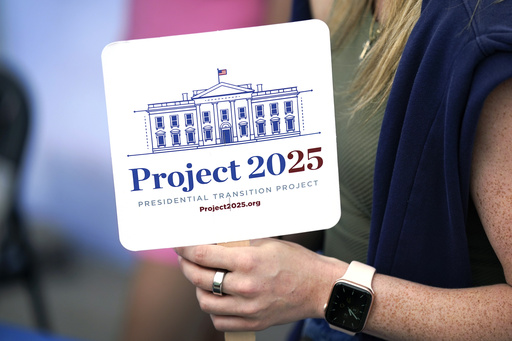
ATLANTA — Donald Trump maintains that Project 2025, a comprehensive 1,000-page plan advocating for a significant rightward shift in the U.S. government and society, does not align with his vision for a second presidential term.
During a debate on September 10, Trump stated, “I haven’t read it. I don’t want to read it — purposefully.”
Despite his claims, there are notable similarities between the philosophies outlined in Project 2025 and Trump’s current campaign agendas, spanning across a multitude of areas including economic policy, immigration, civil rights, and foreign relations.
However, Project 2025 presents a more detailed approach to certain topics compared to Trump’s broader campaign proposals.
Examining the intersections and disparities between Trump’s 2024 campaign and Project 2025 reveals various key issues.
In terms of taxation, both parties could favor the affluent.
Trump advocates for tax policies that largely benefit wealthier individuals and corporations, planning to extend his 2017 tax reform and reduce the corporate tax rate from 21% to 15%. His proposals also involve eliminating specific levies from the Inflation Reduction Act, which funds climate initiatives. Although focusing on working-class tax relief by proposing exemptions for tips, Social Security payments, and overtime wages, the potential for these policies to inadvertently help higher-income earners remains a concern.
Conversely, Project 2025 promotes two federal tax rates of 15% and 30%, aiming to eliminate many deductions and credits, which may place a greater tax burden on middle- and lower-income Americans due to the regressive nature of existing state and local tax systems. Furthermore, it proposes requiring a two-thirds congressional vote to increase income taxes in the future.
When it comes to immigration, both advocates for a return to Trump-era restrictions are evident.
Trump has shifted his “Build the wall!” mantra from 2016 to a vision of implementing the “largest mass deportation program in American history,” suggesting a more aggressive stance on immigration that lacks clarity on legality enforcement. He also wishes to end birthright citizenship and impose “ideological screening” for immigrants.
Project 2025 complements Trump’s approach with a host of specific proposals aimed at redefining immigration policies. It explicitly calls for reinstating every immigration regulation from Trump’s presidency while reducing various forms of immigration, such as refugees and work visas.
In enhancing executive authority, both Trump and Project 2025 show a desire for increased control over federal employment and regulation.
Trump advocates for drastic regulatory cuts and easier procedures for firing federal workers, arguing these steps are necessary for economic recovery. He believes in presidential control over federal spending regardless of Congress’s role in appropriations.
Project 2025 echoes this sentiment, calling for a robust use of executive powers to shed regulations and federal employees who do not serve the administration’s goals, emphasizing the need for a conservative president to take decisive action against existing bureaucratic restraints.
Both initiatives also target programs aimed at diversity, equity, and inclusivity as well as LGBTQ rights.
Trump has vowed to dismantle government diversity programs and undermine protections for LGBTQ individuals, including reversing federal protections for transgender students.
Meanwhile, Project 2025 strongly emphasizes the traditional family structure and advocates for consolidating civil rights enforcement strictly through litigation, effectively giving more power to the administration in deciding these matters.
The elimination of the Department of Education is another focal point in both agendas.
Trump wants to abolish the department but still intends to influence K-12 education funding laws through federal appropriations tied to curriculum content, specifically targeting programs perceived as promoting progressive ideologies.
Project 2025 calls for dismantling the Department of Education completely and returning control over schooling to individual states, promoting the idea that the current educational framework leans towards progressive indoctrination.
On environmental policies, both Trump and Project 2025 reject current climate initiatives.
Trump has labeled climate change a “hoax” and pledges to anchor U.S. energy policies to fossil fuels, while Project 2025 critiques the current administration’s environmental policies and proposes the reduction of various environmental agencies and regulations.
Lastly, regarding foreign policy, a divergence is observed where Project 2025 advocates for a firmer stance on Ukraine, contrasting with Trump’s more isolationist view.
While Trump suggests a preference for military expansion and defense spending, he also remains critical of NATO and encourages a more protective approach within global economics, specifically towards China.
Project 2025 agrees on strengthening military preparedness but diverges from Trump’s skepticism of alliances by affirming the importance of supporting allies while acknowledging the unjust nature of the Russian invasion of Ukraine.
